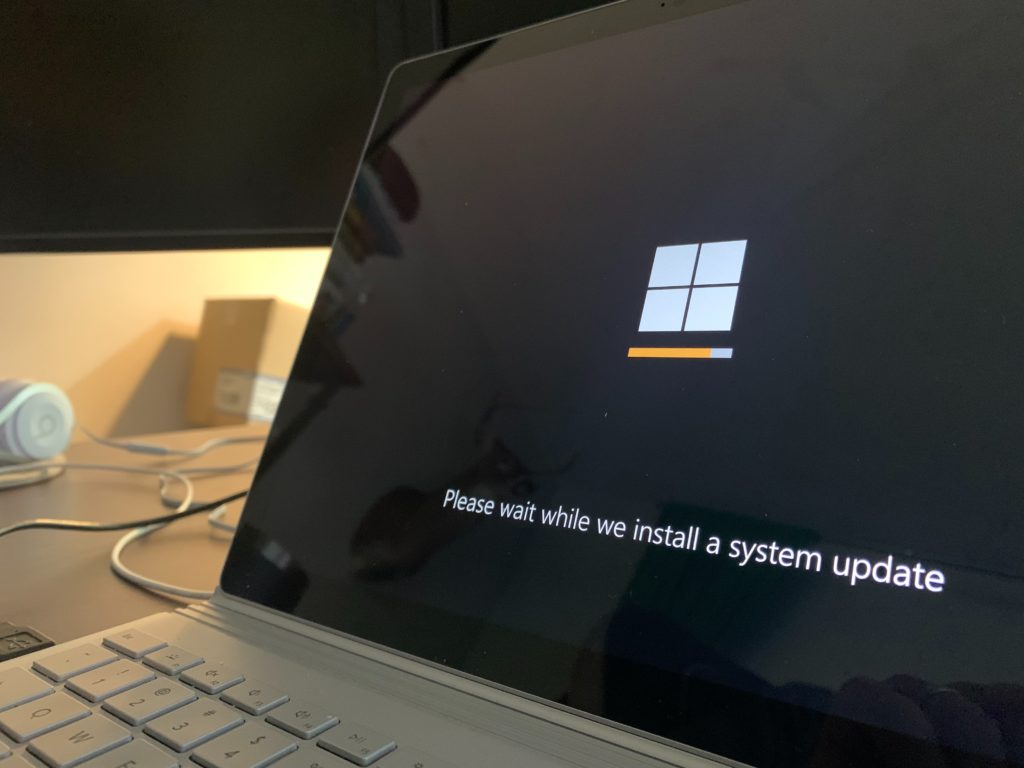As tech stacks grow and internal software demands become more arduous, many business leaders look where to cull. Some ask themselves, when it comes to intranets and Microsoft 365, do you really need both? The answer is yes. As an organization expands, software requirements evolve too, and intranet platforms and Microsoft 365 play diverse roles business-wide. They are arguably both essential, with very different functionality, but integrate well together.
Most people have used Microsoft 356 at some point or another. It provides a suite of cloud-based applications to enterprise organizations designed to make internal processes more efficient and productive. The product has grown into an integral tool for digital workplaces across the globe, allowing an array of functionality to improve collaboration and communications.
The well-known applications such as Teams, SharePoint, OneDrive, Word, Excel, and PowerPoint have become vital tools for organizations to function. The suite also includes an array of niche software such as Power BI and Delve, designed as specialist tools. Microsoft 365 has cemented its place in the digital workplace tech stack, with over 240 million monthly active users.
Microsoft’s continuing domination of the market means that seamless integration with all 365 applications is necessary. To get maximum value from a corporate intranet requires easy accessibility and a frictionless employee experience. Quite simply, if it is too difficult to operate and integrate, employees will be put off. Usage is likely to plummet. So if you’re considering an intranet as part of your digital workplace transformation, it is crucial to deploy one that works intuitively with the existing technology within your organization.
What is the digital workplace?

The digital workplace supports internal teams with technology solutions. It allows them to work more productively and collaborate with ease. Adopting a digital workplace strategy involves multiple forms of hardware, such as laptops and mobile devices, and software, such as intranet platforms and communication technology.
Embracing digital transformation in the workplace can be exceedingly beneficial for efficiency and employee engagement. According to a 2021 study by research company IDG, 86% of SMBs and 96% of enterprises have adopted or have plans to adopt a digital-first strategy. These companies are already reaping the benefits of technological trends and improved workflows. Ignoring this trend is risky, and could mean businesses get left behind by their competitors.
Interact for Microsoft 365
Communication technology, such as intranet platforms, makes business processes faster and improves cross-team collaboration. Issues can arise when organizations implement a new tool and don’t train employees properly on best practices, leading to confusion and friction. This can lead to the business-wide abandonment of otherwise efficient products. Similarly, software that struggles to integrate with other technology makes internal processes more complicated. Not ideal when the tool was initially deployed to improve existing functionality.
How can intranet platforms support the digital workspace?

Utilizing the best technologies to create a fully functional digital workspace allows strategic and necessary changes to an organization. They can evolve business processes, define workplace culture, and enhance employee and customer experiences to meet the ever-evolving needs of the marketplace.
Intranet platforms provide unique features, tailored to an organization’s branding and requirements, that support knowledge sharing and outline workplace culture.
Transforming an organization’s traditional processes to digital is not always easy. But it provides an opportunity to reimagine the workflow and improve engagement, not only with employees but with customers and other stakeholders. And that’s where intranet platforms genuinely come into their own.
Intranet platforms provide unique features, tailored to an organization’s branding and requirements, that support knowledge sharing and outline workplace culture. Employees can read and create new content, use the directory to find people within the organization, and build relationships outside of assigned teams. Ensuring teams have the right tools increases project collaboration and interdepartmental communication. It encourages socialization around common interests and teaches others about these too. The best intranets are customized to suit the ever-changing requirements of their users.
How do intranet platforms fit with Microsoft 365?

Not all intranet platforms are created equal. Some will have an out-of-the-box solution, and others are more tailored to meet the vital needs of global enterprises. For any technology to be successful, integration is critical. Making it user-friendly and understanding the needs of employees is the first step to encouraging uptake. Otherwise, the intranet will become a chore. Seen as just another task to be completed during the workday.
Microsoft 365 is one of those tools that it is essential to integrate with smoothly. There are over 700,000 companies that use the suite in the USA alone. And while Microsoft 365 is incredibly versatile as an enterprise tool, it simply can’t replace the functionality of intranet platforms as digital workplace software for diverse internal communications.
Interact for Microsoft 365
Although possibly the most common software solution, Microsoft is only one part of the broader technology requirements utilized in most modern enterprises. Tech stacks can be very subjective and depend on many factors such as business aims, sector, and workplace culture. To be commercially viable, intranet platforms must adapt to all these needs and more.
Tailored to a growing enterprise

Interact is an intranet platform that caters for a wide range of out-of-the-box integrations and suits the requirements of the world’s leading enterprise applications. It boasts features that exhibit themselves in various ways within the software, offering maximum benefits for businesses.
Through robust APIs that flexibly integrate with non-supported applications, Interact opens up opportunities for all possible requirements. With unique, customizable functionality and by closely aligning with Microsoft 365 technologies, intranet platforms like Interact can surpass their initial purpose within the business. Underlining the value of the different enterprise applications available, and understanding their limitations, is crucial. It’s how software like Interact continues to develop and support these tools.
Intranets promote connectivity and quickly provide necessary information; they need to be flexible and adaptable.
The enterprise technology landscape moves at an extremely fast pace. Expectations are constantly shifting and users are demanding more. Intranets promote connectivity and quickly provide necessary information; they need to be flexible and adaptable. When attempting to define or create a workplace culture through software, the employee experience should be enhanced. But with that being said, some still wonder – do you even need an intranet platform, and can’t Microsoft 365 do everything you need?
Why SharePoint or Teams is not an intranet

After investing heavily in the Microsoft suite, some business leaders ask whether an additional intranet platform is necessitated. With its various tools, Microsoft 365 shares many standard features of an intranet platform. For example, Microsoft Teams is a communication tool where users can talk or file share, access calendars, and do some project management. But this is not the same as an intranet and does not provide the same functionality.
SharePoint is another intranet-like product. However, it is essentially a cloud-based document management tool, primarily used to store and share files. SharePoint is excellent for this purpose and can house thousands of files over time, particularly in enterprise-level organizations. However, there are downsides. It can quickly get overwhelmed with inaccessible content that is siloed from various teams, misnamed, or is outdated and irrelevant.
Interact for Microsoft 365
Both of these solutions eventually render themselves redundant when placed alongside existing intranet platforms. When used for unintended roles, they become unfit for purpose. SharePoint, although useful as cloud-based document storage shouldn’t be confused with intranet cloud solutions. SharePoint often fails to address the core purpose of an intranet: to connect and inform each and every employee.
Likewise, Microsoft Team may operate as a functional communication tool. Still, it misses vital features such as blog sharing, pulse surveys, and peer-to-peer recognition. It ultimately falls short when used as an intranet. If attempted to be redressed as one, workplace culture will suffer. Communicating essential company news to global teams in new and exciting ways is nearly impossible when solely using Microsoft 365. It certainly doesn’t have the goals of a digital workplace at its core.
Moving on from Microsoft 365

Simply building an intranet on Microsoft 365 is not the answer either. With many third-party plugins and applications, it’s easy to think there is a way to create an intranet-light experience for employees. However, these tend to plug the weaknesses in SharePoint or Team’s out-of-the-box offering, rather than adapt to the multiple business requirements of most modern workplaces. It makes the intranet bulky and unintuitive, with a poor user experience. The main issue caused by this? Low adoption and a lack of internal communication.
Microsoft 365 has long been an inherent cog in the digital workplace, but SharePoint can quickly get out of control and become more of a hindrance, particularly on overstretched IT departments. It requires specialist internal support to set up and maintain, a burden of time and effort that many tech support workers are quick to avoid.
When complications like this arise, intranet platform projects become arduous and time-consuming, not inspirational and innovative like they were designed to be. They are supposed to make things easier, but that is not always the case when adapting one software into something unintended. It could mean a loss of workplace agility and future product direction, caused by easily avoided software complications. Getting it badly wrong can even lead to a decimated workplace culture where interdepartmental collaboration is a thing of the past.
Which is why independent intranets offer a broad spectrum of other benefits. They do this by integrating with other vital business tools, including Microsoft 365. This is alongside its primary purpose of facilitating corporate communications and other out-the-box features designed to bring that digital workplace together.
Your enterprise intranet and its integration with Microsoft 365 should be complementary. The two serve distinct purposes within an organization, each offering a variety of benefits; however, when the two are unified and work together intuitively, organizations can realize the true value and potential of the digital workplace.


